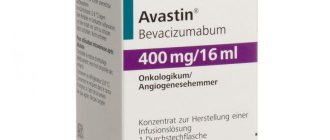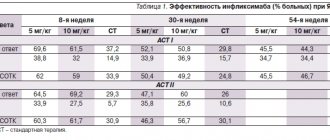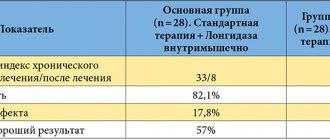Pharmacodynamics and pharmacokinetics
Dopamine - what is it? According to Wikipedia, dopamine is one of the most important neurotransmitters produced in the brains of humans and animals. The substance is a precursor to adrenaline and norepinephrine . Plays an important role in the processes of human motivation and learning.
Dopamine is a diuretic and cardiotonic . The drug also tends to increase blood pressure . The active substance acts on dopamine receptors and dilates blood vessels. The degree of resistance of the renal vascular endothelium decreases, glomerular filtration and the process of diuresis , sodium ions are more efficiently removed from the body.
The drug in small and moderate doses stimulates beta-1 adrenergic receptors and increases minute blood . During use of the drug, systolic blood pressure , myocardial oxygen demand, and blood flow in the coronary vessels .
Due to the use of a large amount of the drug, the heart rate , the vessels of the kidneys narrow, and the pressure during systole and diastole increases.
After introducing the medicine into the body, the drug reaches its maximum effect after 5 minutes. After 10 minutes, the effect of the product is significantly reduced.
Pharmacological properties of the drug Dopamine
Catecholamine, neurotransmitter. Endogenous dopamine is a metabolic precursor to norepinephrine (norepinephrine) and epinephrine (adrenaline). It has a specific stimulating effect on dopamine receptors, and in high doses also stimulates α- and β-adrenergic receptors. Under the influence of dopamine, peripheral vascular resistance and systolic blood pressure levels increase, heart contractions increase, and cardiac output increases. Heart rate changes slightly; the myocardial oxygen demand increases, but due to the increase in coronary blood flow, more significant oxygen delivery is provided. The use of dopamine increases blood flow in the vessels of the heart, brain, intestines and kidneys, as well as glomerular filtration and sodium excretion by the kidneys. The effect of dopamine occurs quickly and ends 5–10 minutes after the end of the IV infusion. The half-life is about 2 minutes. Approximately 50% of dopamine is bound to plasma proteins. Dopamine is rapidly metabolized in the liver, kidneys and blood plasma under the action of MAO and catechol-O-methyltransferase to inactive metabolites and is intensively excreted by the kidneys. About 25% of the administered dose is metabolized to norepinephrine at the adrenergic nerve endings. Due to rapid elimination, dopamine does not accumulate in the body even with long-term infusions.
Indications for use
Dopamine is prescribed:
- for various types of shock (traumatic, cardiogenic, infectious-toxic, anaphylactic, after surgery );
- after poisoning, if it is necessary to force diuresis ;
- in case of hypovolemic shock , after the volume of circulating blood is restored;
- for relief of acute cardiovascular failure ;
- with a decrease in blood pressure .
Contraindications
The medicine is not prescribed for:
- pheochromocytoma;
- allergies to its components;
- hypertrophic obstructive cardiomyopathy;
- ventricular fibrillation.
Particular care should be taken:
- with myocardial infarction and heart rhythm disturbances;
- patients with diabetes mellitus or atherosclerosis ;
- hypovolemia;
- with thromboangiitis obliterans ;
- patients with metabolic acidosis ;
- for angle-closure glaucoma ;
- persons suffering from hypertension ;
- with hypercapnia ;
- atherosclerosis;
- during breastfeeding ;
- with thyrotoxicosis ;
- thromboembolism;
- patients with prostatic hyperplasia ;
- pregnant women;
- for frostbite and Raynaud's disease ;
- for bronchial asthma .
Dopamine
The drug should be used with caution in case of hypovolemia, severe stenosis of the aortic mouth, myocardial infarction, cardiac arrhythmias (ventricular arrhythmias, atrial fibrillation), metabolic acidosis, hypercapnia, hypoxia, pulmonary arterial hypertension, occlusive vascular diseases (including atherosclerosis, thromboembolism , thromboangiitis obliterans, endarteritis obliterans, diabetic angiopathy, Raynaud's disease, frostbite), diabetes mellitus, bronchial asthma (if there was a history of increased sensitivity to disulfite), idiopathic hypertrophic subaortic stenosis, hypokalemia, impaired renal function, impaired liver function, simultaneous use with MAO inhibitors, pregnancy.
The drug is intended only for intravenous infusion and can only be used in diluted form.
Before administration to patients in shock, hypovolemia should be corrected by administering plasma and other blood substitute fluids.
The infusion should be carried out under the control of diuresis, heart rate, minute blood volume, blood pressure, ECG. A decrease in diuresis without a concomitant decrease in blood pressure indicates the need to reduce the dose of dopamine.
MAO inhibitors, increasing the pressor effect of sympathomimetics, can cause headache, arrhythmia, vomiting and other manifestations of hypertensive crisis, therefore, in patients who have received MAO inhibitors over the past 2-3 weeks, the initial doses of dopamine should be no more than 10% of the usual dose .
Strictly controlled studies of the use of the drug in patients under the age of 18 have not been conducted (there are isolated reports of the occurrence of arrhythmias and gangrene in this group of patients associated with extravasation of the drug during intravenous administration). To reduce the risk of extravasation, it should be injected into large veins whenever possible. To prevent tissue necrosis in case of extravasal penetration of the drug, infiltration with 10-15 ml of 0.9% sodium chloride solution with 5-10 mg of phentolamine should be carried out immediately.
Prescribing the drug against the background of occlusive diseases of peripheral vessels and/or disseminated intravascular coagulation (DIC) in the anamnesis can cause a sharp and pronounced vasoconstriction, leading to skin necrosis and gangrene (careful monitoring should be carried out, and if signs of peripheral ischemia are detected, administration stop the drug immediately).
Impact on the ability to drive vehicles and machinery
Not studied.
Side effects
May occur:
- tachycardia , chest pain, bradycardia blood pressure surges , vasospasm , arrhythmia ( ventricular or supraventricular );
- necrosis of the skin or subcutaneous tissue when the drug gets under the skin;
- headaches , tremors , anxiety;
- shock , bronchospasm ;
- nausea, bleeding in the gastrointestinal tract, vomiting;
- polyuria;
- shortness of breath , goose bumps , azotemia .
Dopamine, instructions for use (Method and dosage)
Depending on the severity of the patient’s condition, the body’s reaction to the administration of the hormone dopamine , blood pressure and other reasons, the dosage of the drug differs significantly and is determined by the doctor.
glucose solution or saline. solution and administered intravenously , most often by drip. The permissible content in 25 ml of solution is 200 mcg of dopamine , in 200 mg - 500 mcg, maximum - 800 mcg of the substance in 1 ml of solution.
Instructions for use of Dopamine
The maximum dosage for adults is 1.5 mg per minute.
To increase myocardial and maintain diuresis it is recommended to administer 100-250 mcg per minute.
To increase blood pressure , it is recommended to administer 300 to 700 mcg per minute.
For children, the optimal dosage is 4 to 6 mcg per kg of body weight per minute.
The course of treatment is no more than a month.
Use of the drug Dopamine
Administered intravenously. 25 or 200 mg are diluted, respectively, in 125 or 400 ml of 5% glucose solution or isotonic sodium chloride solution so that 1 ml of solution contains 200 and 500 mcg of dopamine, respectively. If there are contraindications to the administration of large volumes of liquid, more concentrated solutions are used, diluting 200 mg in 250 ml of the above solutions (1 ml contains 800 mcg of dopamine). The initial rate of administration for an average body weight of 70 kg is 1–4 mcg/kg per 1 min (2–11 drops of 0.05% solution or 1.5–6 drops of 0.08% solution). The therapeutic dose is 5–9 mcg/kg per 1 minute. For vasodilation and arterial hypotension, it is advisable to use dopamine at a dose of 10–15 mcg/kg per minute. If necessary, the rate of administration is increased to 18 mcg/kg per minute. The infusion is carried out continuously for from 2–3 hours to 1–4 days or more. The daily dose reaches 400–800 mg. The administration is carried out under ECG control. The dose and rate of administration are determined taking into account the level of blood pressure, heart rate, heart rate, cardiac output and diuresis. A decrease in diuresis without arterial hypotension indicates the need to reduce the dose.
Overdose
In case of an overdose of the synthetic hormone dopamine, the following are observed: cyanosis , nausea , vomiting , increased blood pressure , tachycardia , spasm of arteries in the periphery, arrhythmia , angina pectoris , pain in the chest, the appearance of extrasystoles .
If the above symptoms appear, you should immediately stop the infusion , possibly using Nitroglycerin or beta-blockers .
Interaction
Butyrphenone , its derivatives and beta-blockers, when combined with the drug, neutralize its effect.
The medicine significantly reduces the effectiveness of nitrates .
Concomitant use of tricyclic antidepressants and medication increases the risk of developing arrhythmia , hypertension and tachycardia .
When the drug is combined with diuretics, the diuretic effect is mutually enhanced.
The drug combination of phenytoin may result in severe hypotension .
MAO inhibitors , when taken simultaneously with the drug, enhance cardiac pacing .
When combined with Levodopa, arrhythmia increases .
Octadine and Dopamine enhance the sympathomimetic effect of the former.
When the drug is combined with Chloroform, Halothane, Methoxyflurane, Cyclopropane, Enflurane, Isoflurane, the risk of heart problems increases significantly.
Various sympathomimetics , including cocaine, can significantly increase the load on the heart muscle.
The drug neutralizes the hypotensive effect of Guanadrel , Methyldopa , Guanethidine and rauwolfia alkaloids .
Caution should be used when combining the drug with thyroid hormones , oxytocin , ergometrine , methylergometrine , ergotamine .
When taken in combination with cardiac glycosides, inotropic effect may develop and heart rhythm may be disrupted.
Alkaline solutions , iron salts , thiamine and oxidizing agents should not be mixed in one syringe . These drugs are incompatible with Dopamine.
Dopamine
The drug should be used with caution in case of hypovolemia, severe stenosis of the aortic mouth, myocardial infarction, cardiac arrhythmias (ventricular arrhythmias, atrial fibrillation), metabolic acidosis, hypercapnia, hypoxia, pulmonary arterial hypertension, occlusive vascular diseases (including atherosclerosis, thromboembolism , thromboangiitis obliterans, endarteritis obliterans, diabetic angiopathy, Raynaud's disease, frostbite), diabetes mellitus, bronchial asthma (if there was a history of increased sensitivity to disulfite), idiopathic hypertrophic subaortic stenosis, hypokalemia, impaired renal function, impaired liver function, simultaneous use with MAO inhibitors, pregnancy.
The drug is intended only for intravenous infusion and can only be used in diluted form.
Before administration to patients in shock, hypovolemia should be corrected by administering plasma and other blood substitute fluids.
The infusion should be carried out under the control of diuresis, heart rate, minute blood volume, blood pressure, ECG. A decrease in diuresis without a concomitant decrease in blood pressure indicates the need to reduce the dose of dopamine.
MAO inhibitors, increasing the pressor effect of sympathomimetics, can cause headache, arrhythmia, vomiting and other manifestations of hypertensive crisis, therefore, in patients who have received MAO inhibitors over the past 2-3 weeks, the initial doses of dopamine should be no more than 10% of the usual dose .
Strictly controlled studies of the use of the drug in patients under the age of 18 have not been conducted (there are isolated reports of the occurrence of arrhythmias and gangrene in this group of patients associated with extravasation of the drug during intravenous administration). To reduce the risk of extravasation, it should be injected into large veins whenever possible. To prevent tissue necrosis in case of extravasal exposure of the drug, infiltration with 10-15 ml of 0.9% sodium chloride solution with 5-10 mg of phentolamine should be carried out immediately.
Prescribing the drug against the background of occlusive diseases of peripheral vessels and/or disseminated intravascular coagulation (DIC) in the anamnesis can cause a sharp and pronounced vasoconstriction, leading to skin necrosis and gangrene (careful monitoring should be carried out, and if signs of peripheral ischemia are detected, administration stop the drug immediately).


